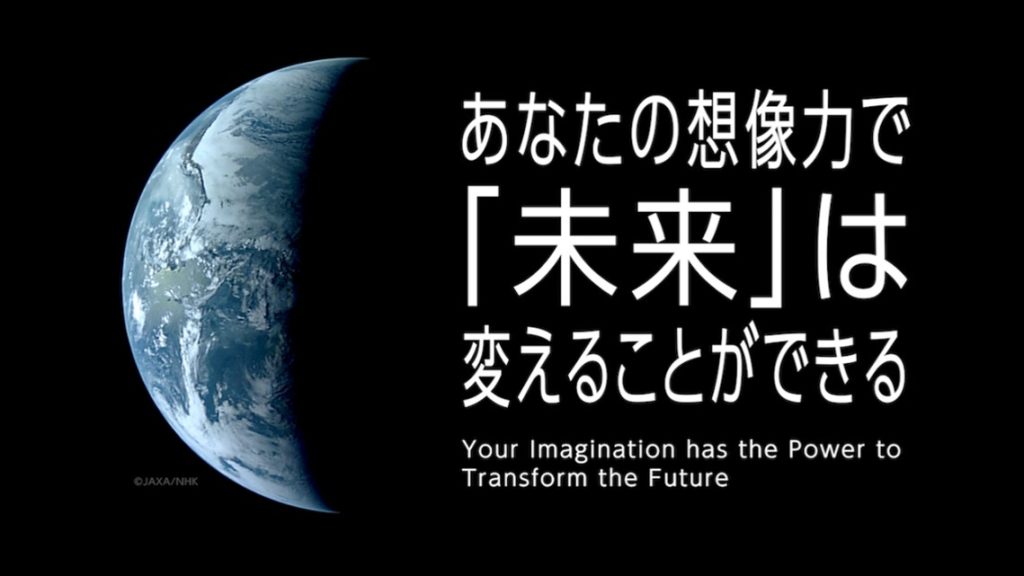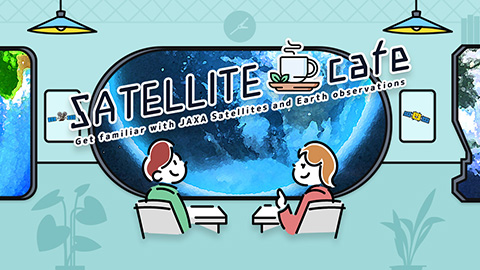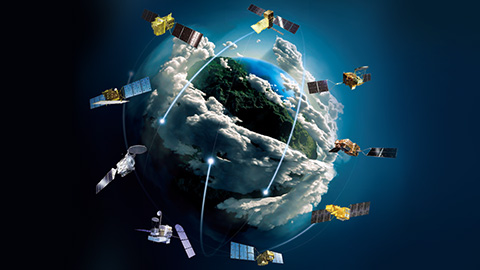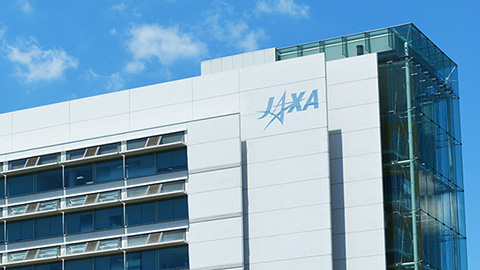Event
2025.10.06 Mon
Space Day (September 12) – A Day at the Osaka-Kansai Expo “Knowing, Understanding, Predicting, Acting: Opening the Future Society with Space Data”
<Event Report>
September 12 is “Space Day.” It was established commemorating the day when astronaut Mamoru Mohri became the first Japanese to fly into space on the Space Shuttle in 1992. On September 12, 2025, JAXA’s Institute of Space and Astronautical Science and the First Space Technology Department held a collaborative event titled “Know, Understand, Predict and Act – Shaping Future Society with Space Data.” at the Future Life Village FLE Stage of Expo 2025 Osaka Kansai venue.
Currently, astronaut Kimiya Yui is staying on the International Space Station (ISS), and the presence of Japanese people in space has been increasing, but space still is a realm distant to many people. For many, it is difficult to directly see space or to view the Earth from space, but probes and satellites observe space and the Earth on our behalf every day and deliver the data to us.

The event consisted of three parts, including talk sessions about space data observed by exploration spacecraft and Earth observation satellites, each by JAXA researchers and an engineer, alongside a special video release. Participants were able to view the observation data using tablets or their own smartphones.
The videos are also available on JAXA’s YouTube channel, so please be sure to watch them.
– A future society unlocked by space data
Talks on space data

This event was jointly conducted by two departments of JAXA that obtain data from Earth and celestial bodies other than Earth. The Department of Advanced Space Technology handles data acquired from observations by satellites orbiting Earth, which are used in various aspects of daily life, while the Institute of Space and Astronautical Science handles data from celestial bodies other than Earth obtained by spacecraft traveling beyond Earth’s gravitational sphere.
Satoshi Nakahira from the Scientific Satellite Operations and Data Utilization Unit at the Institute of Space and Astronautical Science gave a presentation titled “Knowing Space, Playing in Space: The Future Created by Curiosity,” introducing how observation data that may seem far removed from daily life, such as planetary exploration and astronomical observations, are actually important for our lives and future. Additionally, an experience using a web app that can be easily used provided a chance to utilize those data at “DARTS – A Place Where Anyone Can Become a Space Scientist.” We introduced observation data from planetary exploration, in this collaborative event.
Keiichi Ohara of the Earth Observation Research Center in the First Space Technology Department, gave a presentation titled “Viewing Earth’s ‘Water’ from Space”, highlighting that the AMSR series of microwave radiometers has been conducting observations for over 20 years, with observation data being utilized in familiar areas such as fisheries and weather forecasting. We also showed the comparison of sea surface temperatures from AMSR observation data, using the “JAXA Earth Dashboard“.
Yukihiro Kankaku, who concurrently serves as the mission manager for the First Space Technology Department’s “Daichi-2” and the project manager for “Daichi-4,” gave a presentation titled “~Between the Sky and Land (Daichi)~.” He introduced how the “Daichi” satellite series can observe crustal movements caused by earthquakes, among other things. Due to the radio wave transparency, a characteristic of the “Daichi” series, it is possible to identify flooded areas during heavy rain, providing valuable information for disaster prevention. Additionally, the satellites help with agricultural and deforestation data and can also monitor the status of ships and sea ice, demonstrating their wide range of applications.
We received a lot of feedbacks!

Thank you to everyone who came to our event, those who watched the live broadcast, and everyone who participated.
We would like to introduce some feedbacks from those who viewed the observational data at the venue.
Exploration data from the asteroid probe ‘Hayabusa2‘ by DARTS
(Viewing the images together with JAXA staff) “I’m thrilled to see data from the inspiring ‘Hayabusa’!”
JAXA Earth API page comparing sea temperatures, titled “Let’s Compare Sea Temperatures.“
“I realized once again that the Earth is getting warmer.”
“I thought that the rise in sea surface temperatures must be affecting the creatures living there as well.”
Drought-related data on the “JAXA Earth Dashboard,“
“Comparing drought data from August 2023 and August 2025 showed that 2025 is drier. Actually, this year feels like there has been less rain, so the data matched the real-life experience.”
Changes in forest distribution between 2007 and 2017 on “Google Earth Engine Apps“
(Child in kindergarten) “The green is disappearing!” (Elementary school siblings looking at the place where they used to live) “The forest is changing! And the terrain is changing too!”
Even if you know about global warming and deforestation as knowledge, seeing the actual observational data should give you new insights from a different perspective.
The special site for the JAXA Institute of Space and Astronautical Science, First Space Technology Department’s Expo Collaboration Event, features a site where you can view observational data introduced during the event on the day.
We encourage everyone to take a look at our space data, learn about the importance of Earth and life, and together think about a future society where life shines.
<Courtesy visits to the Australia and USA Pavilions>

On this occasion, Mr. Futoshi Takiguchi, Director of the First Space Technology Department at JAXA, paid a courtesy visit to the Australia Pavilion and the USA Pavilion, and Dr. Masaki Fujimoto, Director of the Institute of Space and Astronautical Science, also paid a courtesy visit to the USA Pavilion. We are always grateful for the cooperation with the United States and Australia in space activities.
At the USA Pavilion space is one of the major themes of the exhibition, and Ambassador Gray spoke about the long-standing space cooperation between Japan and the United States, which is also prominently featured in the displays at the USA Pavilion. Both directors Fujimoto and Takiguchi expressed their gratitude for the cooperation to date.
At the Australia Pavilion, Takiguchi had a discussion with Ms. Nancy Gordon (center right in the photo), Commissioner General for Australia at World Expo 2025, Osaka, Kansai, and Ms. Sharon Bignell (right in the photo), Assistant Director of Partnerships. Australia’s cooperation with Japan in the space sector was discussed, citing examples such as the recovery of capsules from the asteroid explorers “Hayabusa” and “Hayabusa2”, as well as satellite monitoring of wildfires through the international cooperation project “Sentinel Asia” in the Asia-Pacific region.
<Related Pages>
– JAXA’s First Space Technology Department exhibited at the learning workshop event “NewE EXPO,” organized by Tokyo Shoseki and Sakishima Pre-Expo! They provided content to think about “the Earth’s future” through Earth observation satellites <Post-event Report>
– Between the Moon, Mars, and Deep Space ― The Future Drawn by UAE-Japan Cooperation –
Search by Year
Search by Categories
Tags
-
#Agreement
-
#Application
-
#Award
-
#Climate
-
#DAICHI (ALOS)
-
#DAICHI-2 (ALOS-2)
-
#DAICHI-3 (ALOS-3)
-
#DAICHI-4 (ALOS-4)
-
#Disaster Management
-
#EarthCARE/CPR
-
#Education
-
#GPM/DPR
-
#HIMAWARI
-
#IBUKI (GOSAT)
-
#IBUKI GW (GOSAT-GW)
-
#IBUKI-2 (GOSAT-2)
-
#KIZUNA (WINDS)
-
#SHIKISAI (GCOM-C)
-
#SHIZUKU (GCOM-W)
-
#Tour and Exhibits
-
#TSUBAME (SLATS)
Related Tags
Related News
- Event 2023.12.20 Wed
- Event 2023.12.01 Fri
- Event 2023.03.30 Thu
- Event 2022.06.13 Mon
- Event 2017.11.02 Thu









